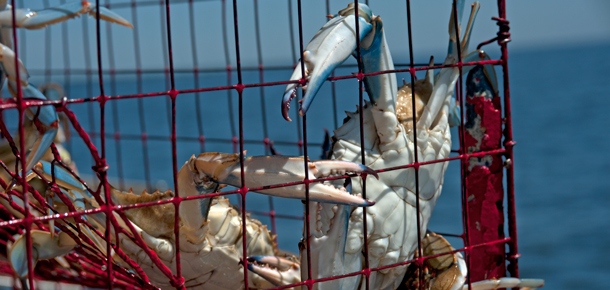Knauss legislative fellowships in Congress help build careers — and they're fun and educational. See our video and fact sheet for details.
Blue Crab Industry

Blue crab fishing and harvesting have held an important place in the history and economics of Maryland for generations. But the ups and downs of the crab fishery have put a strain on those working the water.
Maryland Sea Grant Extension conducts studies and public outreach to support a sustainable crab fishery in Maryland. We work to help conserve the Bay’s crab population but also the livelihood of Chesapeake watermen and crab processors.
With that in mind, Extension specialists launched an innovative program that has helped support the recent recovery of the Bay’s crab population while also securing opportunities for watermen to earn money for their harvests.
We collaborated with the Maryland Department of Natural Resources (DNR) to help design a state program to buy unused commercial fishing licenses for blue crabs. The goal was to limit the number of part-time watermen returning to the water to harvest crabs. The goal was to control potential future fishing pressure on these animals and also help to keep market prices stable.
Through this program:
- The state purchased nearly 700 Limited Crab Catcher licenses — the class of license used by sporadic or recreational crabbers — back from Marylanders.
- The state also bought back about 100 Tidal Fish Licenses, the class of license used by commercial watermen.
- In all, those sales could mean tens of thousands fewer crab pots out on the Bay each year.
Learn more about this project in "The Value of Crabbing," an article in Chesapeake Quarterly, Maryland Sea Grant’s magazine.
See more information from Maryland Sea Grant about blue crabs on the Bay.






